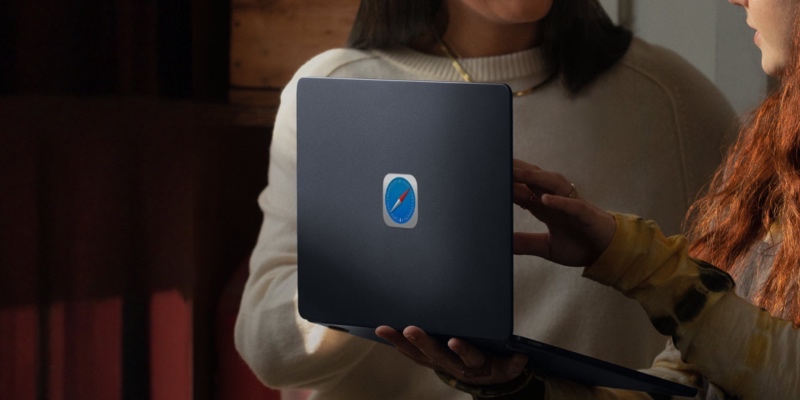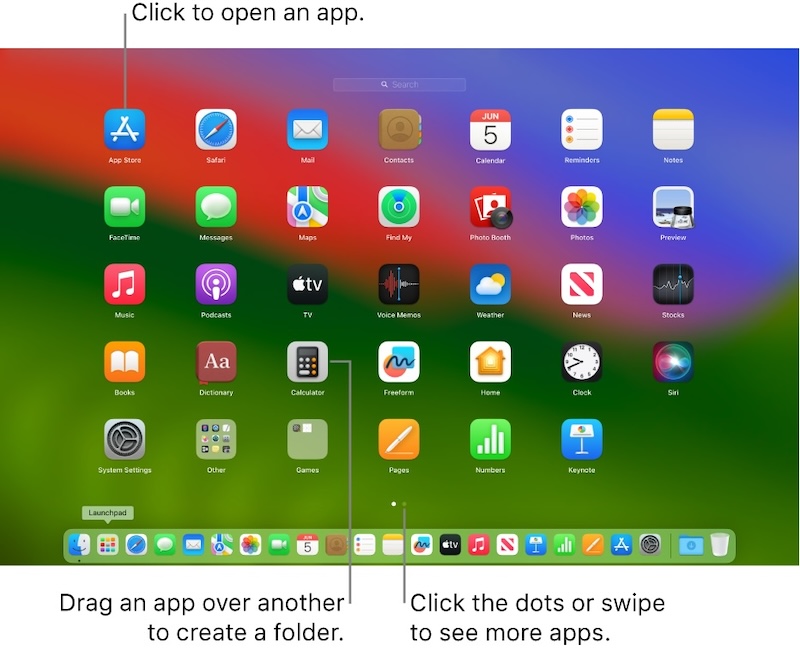Should Apple make a low-cost “SafariBook” Chromebook competitor?
Posted on
by
Kirk McElhearn and Joshua Long

I’m writing this article on my MacBook Air. Before starting, I made some notes on my iPhone. After I complete my first draft, I’ll probably move to my desk and revise the article on my iMac. Then, as the last step of my revision process, I will use my iPad Pro with an Apple Pencil to do final edits.
This ability to work on the same files on multiple devices has changed the way I work. I can move around; there’s no need to remain tethered to my desk all day long. I can sit on a sofa, working on my laptop or my iPad. Or I can go to another room of my home, or even outside, and work with a portable device.
Apple’s practically perfect portability has got me thinking: Is it time for Apple to make its own Chromebook?
In this article:
- Thin clients and Chromebooks
- Apple’s iCloud ecosystem
- The flexibility of iCloud
- Apple’s iCloud and the “SafariBook”
- Winning back the education market
- Single App Mode and the Simple Finder
- What about the hardware?
- How can I learn more?
Thin clients and Chromebooks
Apple’s ecosystem has turned many Apple devices into what could be considered thin clients. A thin client is essentially a dumb computer that serves as a terminal for server-based or cloud-based activities. Thin-client computers generally don’t do anything (or not much) on their own, and require access to a server.
A Chromebook is similar to a thin client, in the sense that most of its activity occurs in the cloud, but it can still perform some tasks without network access and sync when that access is available.
For those unfamiliar with Chromebooks, Google has designed a desktop-class operating system called Chrome OS, built around the Google Chrome browser. A variety of PC manufacturers make Chromebooks; in other words, they sell laptops with Chrome OS preinstalled. (This is a similar situation to Google’s Android mobile operating system. Incidentally, Chrome OS can even run some Android apps.)
Apple’s iCloud ecosystem
Apple devices, meanwhile, aren’t really thin clients. But the Apple ecosystem has developed so that the various Apple devices can perform tasks as if they were thin clients.
It’s not the Apple devices that make this possible; it’s iCloud. The fact that any of these Apple devices can access the same files on iCloud means that, as long as they have the same apps, you can get work done with any device.
The app requirement is important to me; in recent years, I have ensured that the most important apps that I use are available on all of Apple’s platforms. (Well, aside from the Apple TV and HomePod, of course.) I use iA Writer as my text editor, and I store notes in Obsidian and Tot. My calendar, BusyCal, is available for Mac, iPhone, and iPad. And all my communication tools—Mail, Messages, etc.—are also cross-platform.
The flexibility of iCloud
Apple doesn’t talk about iCloud much. They sell storage plans, and they help you store and access files, but they don’t really emphasize how versatile this service is. People who understand how the cloud works can leverage this for their many tasks.
But most people probably don’t realize what they can do with this sort of cloud server. Because, unlike a service like Dropbox which is primarily designed to let you store files, iCloud also allows third-party apps to store data in a number of ways. Some apps, such as iA Writer, store their files directly on iCloud. Other apps use CloudKit, Apple’s iCloud framework that allows developers to store data in databases.
Google and Microsoft also have cloud-based productivity suites. With Google Workspace (which includes Google Drive, Google Docs, etc.), you work in the browser. It feels different, and that’s because it’s always been designed as a thin-client suite; the processing is all done on a server. Similarly, with Microsoft 365 (formerly Office 365, or Microsoft Office), you can choose to work within the browser, but you can also download apps (e.g. Word, Excel, and PowerPoint) on your devices.
But with both Google’s and Microsoft’s cloud suites, you can only access the providers’ own apps. Apple’s cloud is a bit different; you can access apps from other developers on Apple devices and store their data in iCloud.
Apple’s iCloud and the “SafariBook”
Apple’s iCloud.com site is how you can access iCloud from your browser. For now at least, it only lets you access certain official Apple apps: Mail, Calendar, Reminders, etc., plus the productivity apps Pages, Numbers, and Keynote.
In essence, the iCloud site is not that different from Google Workspace or Microsoft 365. But Apple could certainly provide the ability for other apps to be available in the browser in the future, just as the Chrome browser allows many apps to run as extensions.
Rumors have suggested that Apple may be toying with the idea of selling a low-cost laptop, perhaps as early as 2024. If this turns out to be true, it would be a perfect tool to work with iCloud. A low-cost Apple laptop—perhaps it could be thought of as a “SafariBook”—could access iCloud.com the same way a Chromebook accesses the cloud.
Winning back the education market
If Apple expanded app access via Safari extensions, or allowed them to be installed as-is on a SafariBook, this could make iCloud a much richer app environment than other cloud services. It could propel Apple computers back into the education market, which used to be one of the company’s strongholds. Apple lost its hold on the K-12 education market because of Chromebooks and low-cost PCs; it just doesn’t make financial sense to buy carts full of MacBooks when you can get Chromebook carts for a fraction of the price. (Apple has instead tried to sell schools on using iPads, which are still popular for preschool and lower grades. But conventional wisdom suggests that iPads are less desirable for older students, because writing essays is harder without a built-in physical keyboard.)
Were Apple to improve iCloud.com, it could pave the way for Apple to succeed with its own “Chromebook killer” low-cost laptop. Students could potentially use either a SafariBook or an iPad to access their content. It could even incentivize students to buy a Mac or iPad for optimal iCloud access from home as well.
Single App Mode and the Simple Finder
A SafariBook, like a Chromebook, would work with a web browser. (Obviously, instead of its operating system being designed around Google Chrome, a SafariBook’s interface could be integrated with Apple Safari.) Both iOS and iPadOS have a Single App Mode, which can be set by administrators. It wouldn’t be hard to replicate this on the Mac, and launch a web app accessing iCloud, allowing this to be the tool that users have to work on this device.
Apple could also bring back the Simple Finder. The company introduced this feature in 1997 with MacOS 8, and removed it with the release of macOS Catalina. “Simple Finder” mode shows a limited Dock, with just a few icons, and limits the apps that users can access.
On today’s macOS, instead of a single Simple Finder window showing a user’s apps, Macs can use the full-screen Launchpad interface.

The Launchpad interface in macOS Sonoma. Image: Apple.
What about the hardware?
But we haven’t yet discussed one crucial component of a hypothetical SafariBook: the hardware. Would a low-cost MacBook even be feasible for Apple to develop, from a hardware perspective?
Apple has rarely, if ever, sold a new Mac laptop for much less than $900, and third-party sales have recently dipped as low as $750 (for a three-year-old, M1-based MacBook Air). By contrast, low-end Chromebooks often start as low as $250 to $350, with mid-range models above $400. For Apple to be competitive, its Chromebook competitor would need to cost less than $500.
Would Apple be willing to compromise on parts—or profit margins—to be able to sell a Mac laptop at a sub-$500 price point? Perhaps, but perhaps not. Apple could potentially restrict sales of the device to education customers (and perhaps emerging markets where few people can afford a higher-end Mac). However, even if Apple were to sell a “SafariBook” at a loss, it may be difficult to make up for its losses by selling iCloud subscription upgrades, apps, peripherals, and “halo effect” sales of other products within Apple’s ecosystem.
But if other hardware manufacturers can go sub-$500 (and even half that), Apple can probably do it too—if it really wants to.
Apple has the tools to make something like this happen. A low-cost, cloud-leveraging SafariBook could get Apple computers back into schools. Apple can leverage iCloud’s “thin client” nature to make its SafariBook more powerful than Chromebooks and low-end Windows laptops. Only time will tell whether Apple is interested enough to actually go through with it.
How can I learn more?
 Each week on the Intego Mac Podcast, Intego’s Mac security experts discuss the latest Apple news, including security and privacy stories, and offer practical advice on getting the most out of your Apple devices. Be sure to follow the podcast to make sure you don’t miss any episodes.
Each week on the Intego Mac Podcast, Intego’s Mac security experts discuss the latest Apple news, including security and privacy stories, and offer practical advice on getting the most out of your Apple devices. Be sure to follow the podcast to make sure you don’t miss any episodes.
You can also subscribe to our e-mail newsletter and keep an eye here on The Mac Security Blog for the latest Apple security and privacy news. And don’t forget to follow Intego on your favorite social media channels: ![]()
![]()
![]()
![]()
![]()
![]()
![]()
Header image: Mashup of MacBook Air in education image via Apple; scene expanded using ExtendImage.AI; macOS Safari browser logo superimposed over MacBook’s Apple logo; composition by Joshua Long, Intego.